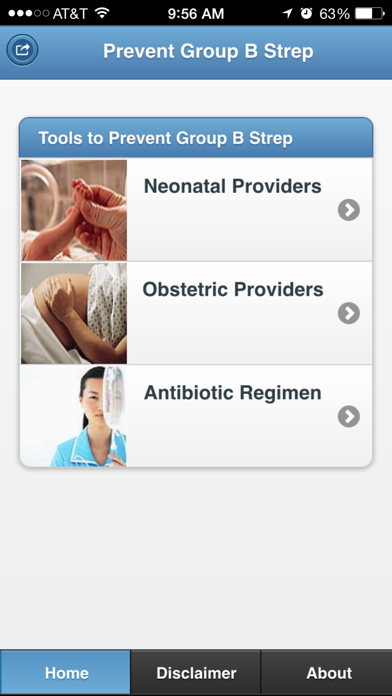Is group b strep contagious. Group B Strep: Causes, Transmission, and Prevention Strategies
What are the causes of Group B Strep. How does Group B Strep spread. Who is at risk for Group B Strep infections. What are the symptoms of Group B Strep in infants and adults. How can Group B Strep infections be prevented.
Understanding Group B Streptococcus: A Common but Potentially Dangerous Bacterium
Group B Streptococcus (GBS), also known as Streptococcus agalactiae, is a type of bacteria that commonly resides in the human body. While it’s typically harmless in healthy adults, GBS can pose significant risks to newborns, pregnant women, and individuals with weakened immune systems or chronic health conditions.
GBS colonizes various parts of the body, including:
- Intestines
- Lower genital tract
- Rectum
- Bladder
- Throat
Many people carry GBS without experiencing any symptoms or health issues. However, under certain circumstances, GBS can cause severe infections that require immediate medical attention.
The Transmission of Group B Strep: Debunking Common Misconceptions
Is Group B Strep contagious in the traditional sense? The answer is not straightforward. GBS is not considered a sexually transmitted infection, nor is it spread through food or water consumption. The exact mechanisms of GBS transmission among adults remain unclear to researchers.

However, the primary concern regarding GBS transmission is from mother to infant during childbirth. When a pregnant woman carries GBS, there’s a risk of passing it to her baby during vaginal delivery. This occurs when the newborn is exposed to or swallows fluids containing the bacteria.
Key Points About GBS Transmission:
- Not sexually transmitted
- Not spread through food or water
- Can be passed from mother to infant during childbirth
- Transmission among adults is not well understood
Risk Factors for Group B Strep Infections in Infants and Adults
While anyone can carry GBS, certain factors increase the risk of developing a GBS infection. Understanding these risk factors is crucial for prevention and early intervention.
Risk Factors for Infants:
- Mother carries GBS
- Premature birth (before 37 weeks)
- Prolonged rupture of membranes (18 hours or more before delivery)
- Maternal chorioamnionitis (infection of placental tissues and amniotic fluid)
- Maternal urinary tract infection during pregnancy
- Maternal fever during labor (greater than 100.4°F or 38°C)
- Previous sibling with GBS disease
Risk Factors for Adults:
- Age 65 or older
- Diabetes
- HIV infection
- Liver disease
- Heart disease
- Cancer or history of cancer
- Other conditions that impair the immune system
Why are these factors significant? They either increase the likelihood of GBS colonization or reduce the body’s ability to fight off potential infections, making individuals more susceptible to GBS-related complications.

Recognizing the Symptoms: Group B Strep in Infants and Adults
The manifestation of GBS infections can vary significantly between infants and adults. Recognizing these symptoms is crucial for timely diagnosis and treatment.
Symptoms in Infants:
GBS infections in infants can be classified as early-onset (within six hours of birth) or late-onset (weeks or months after birth). Common symptoms include:
- Fever or low body temperature
- Difficulty feeding
- Sluggishness or weak muscle tone
- Breathing problems
- Irritability
- Jitteriness
- Seizures
- Rash
- Jaundice
Symptoms in Adults:
In adults, GBS can cause various infections, each with its own set of symptoms:
- Urinary Tract Infection: Frequent urination, burning sensation, pelvic pain
- Bacteremia (blood infection): Fever, chills, confusion
- Pneumonia: Fever, cough, shortness of breath, chest pain
- Skin or Soft-Tissue Infection: Swelling, warmth, redness, pain in the affected area
- Bone or Joint Infection: Fever, swelling, pain, stiffness in the affected area
How quickly do symptoms appear after exposure to GBS? In infants, early-onset symptoms can appear within hours of birth, while late-onset symptoms may develop weeks later. In adults, the onset of symptoms can vary depending on the type and severity of the infection.

Complications of Group B Strep: Beyond the Initial Infection
GBS infections can lead to serious complications, particularly in vulnerable populations such as newborns and individuals with compromised immune systems.
Potential Complications in Infants:
- Pneumonia
- Meningitis (inflammation of the membranes surrounding the brain and spinal cord)
- Bacteremia (bloodstream infection)
Potential Complications in Pregnant Women:
- Urinary tract infection
- Chorioamnionitis (infection of the placenta and amniotic fluid)
- Endometritis (infection of the uterine lining)
- Bacteremia
Potential Complications in Older Adults and Those with Chronic Conditions:
- Skin infections
- Bacteremia
- Urinary tract infections
- Pneumonia
- Bone and joint infections
- Endocarditis (infection of the heart valves)
- Meningitis
Why are these complications so serious? Many of these conditions can be life-threatening if not treated promptly and effectively. They can lead to long-term health issues, organ damage, and in severe cases, death.

Prevention Strategies: Protecting Against Group B Strep Infections
While it’s not always possible to prevent GBS colonization, there are strategies to reduce the risk of infection, especially in high-risk groups.
Prevention During Pregnancy and Childbirth:
- GBS screening between 36 and 37 weeks of pregnancy
- Intrapartum antibiotic prophylaxis for GBS-positive mothers
- Close monitoring of at-risk infants after birth
Prevention in Adults:
- Managing underlying health conditions effectively
- Maintaining good hygiene practices
- Seeking prompt medical attention for potential symptoms of infection
How effective are these prevention strategies? When implemented correctly, intrapartum antibiotic prophylaxis can significantly reduce the risk of early-onset GBS disease in newborns. For adults, managing underlying health conditions and practicing good hygiene can help prevent many types of infections, including those caused by GBS.
Diagnosis and Treatment: Addressing Group B Strep Infections
Proper diagnosis and timely treatment are crucial in managing GBS infections and preventing complications.

Diagnostic Methods:
- Culture tests (for pregnant women)
- Blood tests
- Urine tests
- Cerebrospinal fluid analysis (in cases of suspected meningitis)
Treatment Approaches:
- Intravenous antibiotics for severe infections
- Oral antibiotics for milder cases
- Supportive care for symptom management
What factors influence the choice of treatment? The severity of the infection, the patient’s age and overall health, and the specific type of GBS infection all play a role in determining the most appropriate treatment approach.
Living with Group B Strep: Long-term Considerations and Management
For most healthy adults, carrying GBS doesn’t require any specific management. However, for those who have experienced a GBS infection or are at high risk, there are some long-term considerations to keep in mind.
Long-term Management Strategies:
- Regular health check-ups
- Prompt treatment of any infections
- Management of underlying health conditions
- Awareness of potential symptoms for early detection
How does a history of GBS infection impact future health decisions? For pregnant women who have previously had a baby with GBS disease, it may influence management strategies in future pregnancies. For adults with chronic conditions, it may necessitate more vigilant monitoring and proactive health management.
![]()
In conclusion, while Group B Strep is a common bacterium, its potential to cause serious infections shouldn’t be underestimated. By understanding the risks, recognizing the symptoms, and implementing appropriate prevention and treatment strategies, we can significantly reduce the impact of GBS infections on vulnerable populations. As research continues, our understanding of GBS and our ability to manage it effectively will only improve, leading to better outcomes for those affected by this challenging bacterium.
Group B strep disease – Symptoms & causes
Overview
Group B strep (streptococcus) is a common bacterium often carried in the intestines or lower genital tract. The bacterium is usually harmless in healthy adults. In newborns, however, it can cause a serious illness known as group B strep disease.
Group B strep can also cause dangerous infections in adults with certain chronic medical conditions, such as diabetes or liver disease. Older adults are at increased risk of illness due to group B strep, too.
If you’re a healthy adult, there’s nothing you need to do about group B strep. If you’re pregnant, get a group B strep screening test during your third trimester. If you have group B strep, antibiotic treatment during labor can protect your baby.
Products & Services
Symptoms
Infants
Most babies born to women carrying group B strep are healthy. But the few who are infected by group B strep during labor can become critically ill.
But the few who are infected by group B strep during labor can become critically ill.
In infants, illness caused by group B strep can be within six hours of birth (early onset) — or weeks or months after birth (late onset).
Signs and symptoms might include:
- Fever
- Low body temperature
- Difficulty feeding
- Sluggishness, limpness or weak muscle tone
- Difficulty breathing
- Irritability
- Jitteriness
- Seizures
- Rash
- Jaundice
Adults
Many adults carry group B strep in their bodies — usually in the bowel, vagina, rectum, bladder or throat — and have no signs or symptoms.
In some cases, however, group B strep can cause a urinary tract infection or other more-serious infections. Signs and symptoms of infections that may be caused by group B strep include the following.
Urinary tract infection
- A strong, persistent urge to urinate
- A burning sensation or pain when urinating
- Passing frequent, small amounts of urine
- Urine that appears red, bright pink or cola colored — a sign of blood in the urine
- Pelvic pain
Blood infection (bacteremia)
- Fever
- Chills
- Confusion or lack of alertness
Pneumonia
- Fever
- Chills
- Cough
- Shortness of breath
- Chest pain when you breathe or cough
Skin or soft-tissue infection
- Swelling, warmth or redness in the area of the infection
- Pain in the area of the infection
- Lesions with pus or drainage
Bone or joint infection
- Fever
- Chills
- Swelling, warmth or redness over the area of the infection
- Pain in the area of the infection
- Stiffness or inability to use a limb or joint
When to see a doctor
If you have signs or symptoms of group B strep infection — particularly if you’re pregnant, you have a chronic medical condition or you’re older than 65 — contact your doctor right away.
If you notice your infant has signs or symptoms of group B strep disease, contact your baby’s doctor immediately.
Causes
Many healthy people carry group B strep bacteria in their bodies. You might carry the bacteria in your body for a short time — it can come and go — or you might always have it. Group B strep bacteria aren’t sexually transmitted, and they’re not spread through food or water. How the bacteria are spread to anyone other than newborns isn’t known.
Group B strep can spread to a baby during a vaginal delivery if the baby is exposed to — or swallows — fluids containing group B strep.
Risk factors
Infants
An infant is at increased risk of developing group B strep disease if:
- The mother carries group B strep in her body
- The baby is born prematurely (earlier than 37 weeks)
- The mother’s water breaks 18 hours or more before delivery
- The mother has an infection of the placental tissues and amniotic fluid (chorioamnionitis)
- The mother has a urinary tract infection during the pregnancy
- The mother’s temperature is greater than 100.
 4 F (38 C) during labor
4 F (38 C) during labor - The mother previously delivered an infant with group B strep disease
Adults
Adults age 65 and older are at increased risk of group B strep. You’re also at increased risk of if you have a condition that impairs your immune system or other serious diseases, including the following:
- Diabetes
- HIV infection
- Liver disease
- Heart disease
- Cancer or history of cancer
Complications
Group B strep infection can lead to life-threatening disease in infants, including:
- Pneumonia
- Inflammation of the membranes and fluid surrounding the brain and spinal cord (meningitis)
- Infection in the bloodstream (bacteremia)
If you’re pregnant, group B strep can cause the following:
- Urinary tract infection
- Infection of the placenta and amniotic fluid (chorioamnionitis)
- Infection of the membrane lining the uterus (endometritis)
- Bacteremia
If you’re an older adult or you have a chronic health condition, group B strep bacteria can lead to any of the following conditions:
- Skin infection
- Bacteremia
- Urinary tract infection
- Pneumonia
- Bone and joint infections
- Infection of the heart valves (endocarditis)
- Meningitis
Prevention
If you’re pregnant, the American College of Obstetricians and Gynecologists recommends a group B strep screening during weeks 36 to 37 of pregnancy./strep-throat-symptoms-5ae1f28aeb97de003955dcd2.png) Your doctor will take swab samples from your vagina and rectum and send them to a lab for testing.
Your doctor will take swab samples from your vagina and rectum and send them to a lab for testing.
A positive test indicates that you carry group B strep. It doesn’t mean that you’re ill or that your baby will be affected, but that you’re at increased risk of passing the bacteria to your baby.
To prevent group B bacteria from spreading to your baby during labor or delivery, your doctor can give you an IV antibiotic — usually penicillin or a related drug — when labor begins.
If you’re allergic to penicillin or related drugs, you might receive clindamycin or vancomycin as an alternative. Because the effectiveness of these alternatives is not well understood, your baby will be monitored for up to 48 hours.
Taking oral antibiotics ahead of time won’t help because the bacteria can return before labor begins.
Antibiotic treatment during labor is also recommended if you:
- Have a urinary tract infection
- Delivered a previous baby with group B strep disease
- Develop a fever during labor
- Haven’t delivered your baby within 18 hours of your water breaking
- Go into labor before 37 weeks and haven’t been tested for group B strep
Vaccine in development
Although it’s not available yet, researchers are working on a group B strep vaccine that could help prevent group B strep infections in the future.:max_bytes(150000):strip_icc()/scarlet-fever-overview-1958805_fin-b03dd028ce63461c8bbdecef8eff4ff5.png)
Group B strep disease – Symptoms & causes
Overview
Group B strep (streptococcus) is a common bacterium often carried in the intestines or lower genital tract. The bacterium is usually harmless in healthy adults. In newborns, however, it can cause a serious illness known as group B strep disease.
Group B strep can also cause dangerous infections in adults with certain chronic medical conditions, such as diabetes or liver disease. Older adults are at increased risk of illness due to group B strep, too.
If you’re a healthy adult, there’s nothing you need to do about group B strep. If you’re pregnant, get a group B strep screening test during your third trimester. If you have group B strep, antibiotic treatment during labor can protect your baby.
Products & Services
Symptoms
Infants
Most babies born to women carrying group B strep are healthy. But the few who are infected by group B strep during labor can become critically ill.
But the few who are infected by group B strep during labor can become critically ill.
In infants, illness caused by group B strep can be within six hours of birth (early onset) — or weeks or months after birth (late onset).
Signs and symptoms might include:
- Fever
- Low body temperature
- Difficulty feeding
- Sluggishness, limpness or weak muscle tone
- Difficulty breathing
- Irritability
- Jitteriness
- Seizures
- Rash
- Jaundice
Adults
Many adults carry group B strep in their bodies — usually in the bowel, vagina, rectum, bladder or throat — and have no signs or symptoms.
In some cases, however, group B strep can cause a urinary tract infection or other more-serious infections. Signs and symptoms of infections that may be caused by group B strep include the following.
Urinary tract infection
- A strong, persistent urge to urinate
- A burning sensation or pain when urinating
- Passing frequent, small amounts of urine
- Urine that appears red, bright pink or cola colored — a sign of blood in the urine
- Pelvic pain
Blood infection (bacteremia)
- Fever
- Chills
- Confusion or lack of alertness
Pneumonia
- Fever
- Chills
- Cough
- Shortness of breath
- Chest pain when you breathe or cough
Skin or soft-tissue infection
- Swelling, warmth or redness in the area of the infection
- Pain in the area of the infection
- Lesions with pus or drainage
Bone or joint infection
- Fever
- Chills
- Swelling, warmth or redness over the area of the infection
- Pain in the area of the infection
- Stiffness or inability to use a limb or joint
When to see a doctor
If you have signs or symptoms of group B strep infection — particularly if you’re pregnant, you have a chronic medical condition or you’re older than 65 — contact your doctor right away.
If you notice your infant has signs or symptoms of group B strep disease, contact your baby’s doctor immediately.
Causes
Many healthy people carry group B strep bacteria in their bodies. You might carry the bacteria in your body for a short time — it can come and go — or you might always have it. Group B strep bacteria aren’t sexually transmitted, and they’re not spread through food or water. How the bacteria are spread to anyone other than newborns isn’t known.
Group B strep can spread to a baby during a vaginal delivery if the baby is exposed to — or swallows — fluids containing group B strep.
Risk factors
Infants
An infant is at increased risk of developing group B strep disease if:
- The mother carries group B strep in her body
- The baby is born prematurely (earlier than 37 weeks)
- The mother’s water breaks 18 hours or more before delivery
- The mother has an infection of the placental tissues and amniotic fluid (chorioamnionitis)
- The mother has a urinary tract infection during the pregnancy
- The mother’s temperature is greater than 100.
 4 F (38 C) during labor
4 F (38 C) during labor - The mother previously delivered an infant with group B strep disease
Adults
Adults age 65 and older are at increased risk of group B strep. You’re also at increased risk of if you have a condition that impairs your immune system or other serious diseases, including the following:
- Diabetes
- HIV infection
- Liver disease
- Heart disease
- Cancer or history of cancer
Complications
Group B strep infection can lead to life-threatening disease in infants, including:
- Pneumonia
- Inflammation of the membranes and fluid surrounding the brain and spinal cord (meningitis)
- Infection in the bloodstream (bacteremia)
If you’re pregnant, group B strep can cause the following:
- Urinary tract infection
- Infection of the placenta and amniotic fluid (chorioamnionitis)
- Infection of the membrane lining the uterus (endometritis)
- Bacteremia
If you’re an older adult or you have a chronic health condition, group B strep bacteria can lead to any of the following conditions:
- Skin infection
- Bacteremia
- Urinary tract infection
- Pneumonia
- Bone and joint infections
- Infection of the heart valves (endocarditis)
- Meningitis
Prevention
If you’re pregnant, the American College of Obstetricians and Gynecologists recommends a group B strep screening during weeks 36 to 37 of pregnancy. Your doctor will take swab samples from your vagina and rectum and send them to a lab for testing.
Your doctor will take swab samples from your vagina and rectum and send them to a lab for testing.
A positive test indicates that you carry group B strep. It doesn’t mean that you’re ill or that your baby will be affected, but that you’re at increased risk of passing the bacteria to your baby.
To prevent group B bacteria from spreading to your baby during labor or delivery, your doctor can give you an IV antibiotic — usually penicillin or a related drug — when labor begins.
If you’re allergic to penicillin or related drugs, you might receive clindamycin or vancomycin as an alternative. Because the effectiveness of these alternatives is not well understood, your baby will be monitored for up to 48 hours.
Taking oral antibiotics ahead of time won’t help because the bacteria can return before labor begins.
Antibiotic treatment during labor is also recommended if you:
- Have a urinary tract infection
- Delivered a previous baby with group B strep disease
- Develop a fever during labor
- Haven’t delivered your baby within 18 hours of your water breaking
- Go into labor before 37 weeks and haven’t been tested for group B strep
Vaccine in development
Although it’s not available yet, researchers are working on a group B strep vaccine that could help prevent group B strep infections in the future.
Streptococcus: photo of streptococcus, symptoms of streptococcus infection, how to cure streptococcus
Streptococci and the harm they cause
What is streptococcus? Under this common name, a group of bacteria is united, under a microscope resembling a chain of cells of a round or oval shape. Streptococci are ubiquitous: they can be found in air and water, in soil and in food. Moreover, many species of streptococcus live in the body of animals and humans, inhabiting the intestines, respiratory tract, and skin. For the time being, these hidden aggressors do not manifest themselves in any way, but the slightest violation of immunity can lead to an explosive increase in the number of streptococci and provoke a streptococcal infection, the treatment of which is a long and complicated process.
Streptococcus species
The diversity of streptococci led to the need to classify bacteria, which were divided into several groups depending on their biochemical characteristics.
- Streptococcus group A.
The most contagious streptococcus that can cause a number of dangerous diseases: from tonsillitis to rheumatism. It lives in the body of a healthy person, localized mainly in the intestines. - Group B or hemolytic streptococcus.
Streptococci got this name because of their ability to destroy red blood cells. Bacteria can cause serious diseases of the heart and joints, sepsis in newborns. If streptococcus agalactia is detected in a smear of a pregnant woman, she is prescribed immediate treatment, since this type of bacteria can cause severe pathologies in the development of the fetus, as well as lead to miscarriage. - Bacteria groups C and G.
They live in the respiratory tract (for example, this streptococcus can be found in the nose), on the mucous membranes of the genital organs of men and women, on the skin. Streptococcus can cause severe pneumonia, as well as dangerous inflammation (including purulent) of other organs.
There are other types of streptococci (from A to U), many of which can cause the development of dangerous pathological conditions in humans and, if not treated correctly or not in time, lead to death.
Why and how does streptococcus manifest itself?
If streptococcus can be found in the body of a healthy person, then a logical question arises: what reasons trigger the process of pathogenic growth of microorganisms and lead to infection? Streptococci and the human immune system are in a delicate balance relative to each other, and any external or internal factor (for example, a decrease in immunity caused by hypothermia) can shift it in favor of bacteria. And then a streptococcal infection develops. Under this common name, various diseases caused by the bacterium streptococcus are combined: these are tonsillitis, tonsillitis, rheumatism and endocarditis, and many others.
Streptococcus is contagious and can be transmitted both from person to person (in this case, an asymptomatic carrier can also be the source of infection), and by airborne droplets.
Pathogenic effect of streptococcus
Any species of streptococcus (streptococcus oralis, pyogenic streptococcus, streptococcus spices and others) have a pathogenic effect on the body due to the release of metabolic products into the blood, which are poisonous to the human body. Some substances produced by streptococci destroy red blood cells and tissues of the cardiovascular system, leading to their gradual thinning, heart rhythm disturbances, and so on. The toxins emitted by streptococcus also destroy white blood cells, significantly suppressing human immunity. That is why streptococcus in the blood gives such dangerous complications and is much more difficult to treat than staphylococcus.
In addition, streptococcus is able to mutate and adapt to changing environmental conditions, adapt to medications that are gradually losing their effectiveness. Once untreated, the bacterium becomes the cause of a chronic streptococcal infection, the treatment of which is extremely difficult.
Symptoms of streptococcus
Pathogenic streptococcus can cause a huge range of diseases with various symptoms. The mechanism of damage to the body is as follows: streptococcus enters the body or organ, usually through a wound in the mucous membrane (skin). Therefore, streptococcal infections become frequent companions of helminthic invasions – parasites damage the gastrointestinal tract, opening the “gate” for streptococcus. At the site of penetration of the bacteria, an inflammatory process begins, tissue necrosis is possible.
By releasing specific substances, streptococci acquire the ability to penetrate the lymphatic system and, together with the flow of fluid, are carried throughout the body, damaging every organ they encounter: lungs, heart, brain, and so on. At the same time, toxins secreted by the bacterium accumulate in the body, and the body gives a response: the temperature rises sharply, the patient is shivering, he feels dizzy. These signs are observed in almost all types of streptococcal diseases (streptococcus in the mouth, streptococcus in the urethra, cutaneous streptococcus, and so on), so they can be considered common symptoms of the presence of streptococci in the blood. Streptococcus also often causes a rash: it occurs due to the chemical action of the bacteria’s poisons on small vessels that expand and fill with blood. However, each disease caused by streptococcus has its own characteristics.
Streptococcus also often causes a rash: it occurs due to the chemical action of the bacteria’s poisons on small vessels that expand and fill with blood. However, each disease caused by streptococcus has its own characteristics.
- Angina.
If you were wondering “what is streptococcus anginosus?”, then this is the bacterium responsible for the development of angina. Symptoms of infection with this microorganism are inflammation of the tonsils, malfunctions of the heart and kidneys, the patient experiences an excruciating sore throat, difficulty swallowing, and a dull headache. Angina caused by streptococcus is severe and causes serious consequences: functional disorders in the cardiovascular and urinary systems can remain for life. - Pneumonia.
If streptococcus infects the respiratory tract, then the patient develops a cough, breathing problems, and shortness of breath is possible. Over time, the symptoms worsen, the bacteria begin to cause changes in the tissues, so after severe infections, a person may not fully recover.
How to treat streptococcus?
If streptococcus can be found in any tissues and organs (streptococcus in the ear, streptococcus in the eyes, and so on), then how to diagnose and cure it? To diagnose streptococcus ruodenesis and other types of these bacteria, a blood test is taken from the patient, bacteriological studies are carried out, which can indicate the presence of the pathogen with sufficient accuracy. After identifying streptococcus, it is necessary to choose the right treatment.
Treatment of group B streptococcus involves taking a course of antibiotics that suppress the vital activity of bacteria. The choice of medication depends on the patient’s condition, the severity of the course of the disease, the symptoms of group B streptococcus (as well as on the type of streptococcus itself). Therefore, often the treatment of streptococcus agalactia in men and women may differ. In addition, therapy should be aimed at restoring human immunity and maintaining the normal functioning of all organ systems.
NPK “Optisalt” has developed a drug suitable for the prevention of streptococcus in women and men. Based on natural ingredients, it effectively eliminates the consequences of invasion, and by strengthening the immune system, it prevents bacteria from re-infecting a person.
Infections during pregnancy. Detection of group B streptococcus
05/16/2017
Infections during pregnancy that can be transmitted from mother to fetus deserve great attention, as they carry a potential risk of infection of the fetus or newborn and may lead to undesirable consequences. In addition, the diagnosis of infections during pregnancy has certain characteristics due to the asymptomatic course of most maternal infections or non-specific signs and symptoms.
Group B Streptococcus (GBS, Streptococcus agalactiae ) – Causes severe neonatal illness and poses a risk to certain patients in other age groups.
It has been estimated that GBS in 30% of pregnant women can be found in the vagina and often in the urethra of their sexual partners. Despite the fact that GBS can occur as part of the normal intestinal microflora of a woman, their colonization of the urogenital tract of a pregnant woman poses a significant risk to the fetus due to the possibility of ascending infection. There is a significant relationship between the carriage of GBS in the vagina, not only with early infection of newborns (sepsis, pneumonia and meningitis), but also with premature birth, premature discharge of amniotic fluid, urinary infection in pregnant women, development of chorioamnionitis during childbirth, endometritis.
In the USA, Canada and European countries, regulated National programs for the prevention and treatment of GBS infections have been adopted, which are mandatory for all medical institutions.
From 01.05.17, DILA ML introduces a new study “Identification of group B streptococcus (streptococcus agalactiae) with sensitivity to antibiotics”.
Promptly identify pregnant women who are positive for group B streptococcus and who have risk factors for increased chance of infection in the newborn allows to conduct intravenous antibiotic prophylaxis with the onset of labor and prevent early infection of the newborn with group B streptococcus:
|
Rules for preparing : 24 hours before the use of intravaginal and rectal medications should be excluded, before taking the biomaterial, do not wash the external genitalia.
The biomaterial is taken from two points: the lower third of the vagina and the next – the rectum, the overall result is evaluated.
Detection of group B streptococcus is carried out by a cultural method with the determination of sensitivity to antibiotics.
Research period: 6 days (Kyiv), 7.5 days (Regions).
Adequate assessment of the risk of infection of the newborn with group B streptococcus will significantly reduce the possibility of complications and ensure a favorable pregnancy outcome.
Literature:
1. Australasian society for infectious diseases, 2014
2. Antibiotic Prevention for Maternal Group B Streptococcal Colonization on Neonatal GBS-Related Adverse Outcomes: A Meta-Analysis, Shunming Li, Jingya Huang, 2017.
3. Early onset Group B Streptococcal disease Queensland clinical guidelines, 2016
4. Effect of group B streptococci colonizing the urogenital tract of pregnant women on the course and outcome of pregnancy / Oganyan K.

 4 F (38 C) during labor
4 F (38 C) during labor 4 F (38 C) during labor
4 F (38 C) during labor
